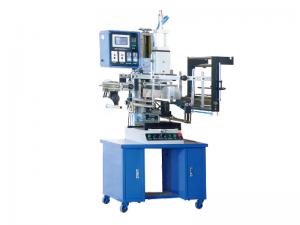Hot Press As A Tool
Corps
The hot press printing machine is a great tool that can be used to quickly and easily apply designs to clothing, accessories, cups, and other promotional items. However, despite the simplicity of the process, there is still a learning curve in applying for heat transfer. Here are some of the most common heat transfer errors and how to avoid them.
1) Dislocation, bending, or reverse heat transfer
One of the most common and frustrating heat transfer errors is incorrect heat transfer. This may mean that your image is skewed, off-center, backward or upside down. This is frustrating because you know that this error boils down to avoidable human error. When generating the transmission, the image needs to be mirrored so that it can be printed in the correct way. To avoid print distortion, please load the substrate correctly. For shirts, this means aligning the label with the back of the shirt and smoothing the substrate. There is a clear overlay with a grid or laser grid system that can help you place the heat transfer in the right place and directly on the clothes. Slowly lower the heat press and apply enough pressure to avoid moving the substrate during the transfer process.
2) Printed matter that will peel or wash off
Your heat transfer should be bonded to your substrate so that when you peel off the cover, the transfer will stay in place. A well-bonded transfer should also remain in place after washing. If your thermal transfer is peeled off or washed away by the transfer paper, there may be several things to blame. First, make sure your heat transfer type is suitable for your substrate; not all heat transfer is suitable for all materials. Second, pre-press the substrate to heat the substrate and evaporate any moisture that might affect the adhesion. Finally, apply enough pressure when applying graphics; printers usually pay attention to the recommended transfer temperature and time, but fail to apply enough pressure to bond the image.
3) Burnt substrate
If the substrate you place it on is scorched, discolored, or melted during the transfer process, the perfectly applied image will be wasted. In this case, the heat of the printing press can damage the substrate. You either need to adjust the temperature of the printing press or reduce the time the substrate spends at high temperatures. If you cannot make the transfer adhere without scorching the substrate, you may need to choose a thermal transfer made specifically for a synthetic substrate that cannot withstand the heat required for traditional thermal transfer.
4) Dye migration
You lift the top of the heat press to find the perfect applied transfer, but there is a problem: the color of the substrate has migrated to the light-colored ink for the heat transfer. When the heat generated by the printer turns the dye in the synthetic substrate into a gas, allowing it to penetrate into the ink of the image, dye migration occurs. Avoiding dye migration requires reducing the heat of the printer during the transfer process; this may mean choosing heat transfer for synthetic fabrics that are prone to dye migration. Wenling Gaobao Industrial Co., Ltd. is a company that produces plastic bucket heat transfer machines and also a heat press machine company. Welcome to consult!










commentaires